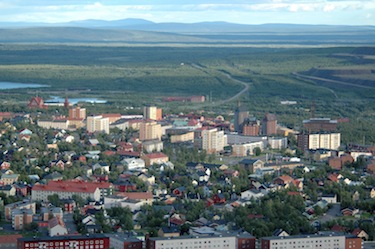Swedish News:
Swedish mining municipalities on top. The cost of lawyers. The Swedish state’s budget.
-
 Kiruna, the northernmost city in Sweden also had Sweden’s highest income increase last year (36%), followed by Pajala (33.1%) and Lomma (31.5%). The mining boom is why the cities of Kiruna and Pajala and also Gällivare place high on the list. Photo: Johan Arvelius
Kiruna, the northernmost city in Sweden also had Sweden’s highest income increase last year (36%), followed by Pajala (33.1%) and Lomma (31.5%). The mining boom is why the cities of Kiruna and Pajala and also Gällivare place high on the list. Photo: Johan Arvelius -
-
Swedish mining municipalities on top
..in more ways than one. 13 of 14 municipalities in Norrbotten had a better development of the meridian income than the Swedish average, numbers from Statistics Sweden show. It is the mining boom that explains why the population in Kiruna, Pajala, and Gällivare place on the top of the income increase (they have an average income increase of over 30%). Best was Kiruna with 36%, second Pajala with 33.1% and Gällivare on fourth place with 31.1%, beaten by Lomma in southern Sweden (not a mining municiaplity) with 31.5%. -
 It cost the Swedish state 1.25 billion SEK to pay for public defenders in 2013.
It cost the Swedish state 1.25 billion SEK to pay for public defenders in 2013. -
-
The cost of lawyers
1.25 billion Swedish crowns, or $191 million, is how much the Swedish state paid for public defenders last year, according to preliminary statistics from Domstolsverket (the Swedish courts). -
 Dog sledding in the countryside surrounding Kiruna. Photography: Yeti Hunter
Dog sledding in the countryside surrounding Kiruna. Photography: Yeti Hunter -
The Swedish state’s budget
The deficits in the state budget was 130 billion SEK ($20 billion) last year. This according to preliminary statistics from Ekonomistyrningsverket (the Swedish National Financial Management Authority). The primary reason is that the state lent 103.6 billion SEK ($16 billion) to Riksbanken (the central bank of Sweden). The national income was 789.9 billion SEK ($120 billion), which is 2.4 billion SEK higher than in 2012. The sale of Nordea (a Nordic-based financial services group) brought incomes to a total of 19.6 billion SEK ($1.6 billion). The expenditures amounted to preliminary 920.8 billion SEK ($140 billion). Apart from the loan to Riksbanken, there was also an increased fee to the EU, and expendiutre including labor market and employment, and education. Meanwhile, the expenditure for debt interest rates went down with 10.9 billion SEK ($1.6 billion). -
-
